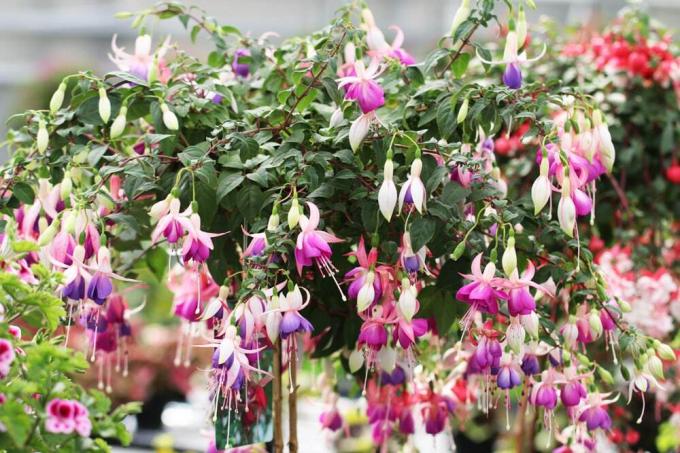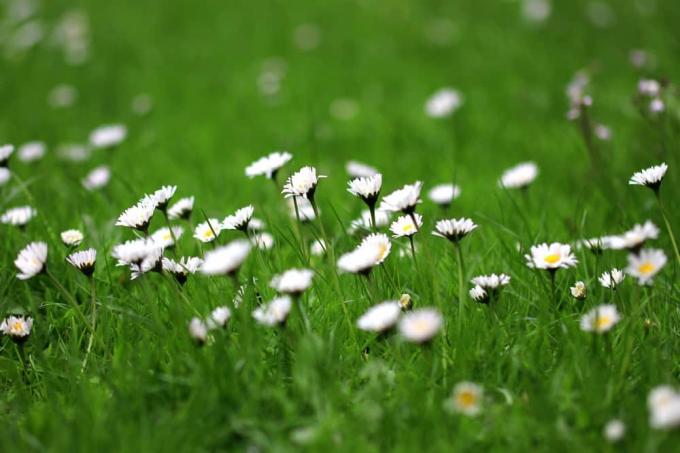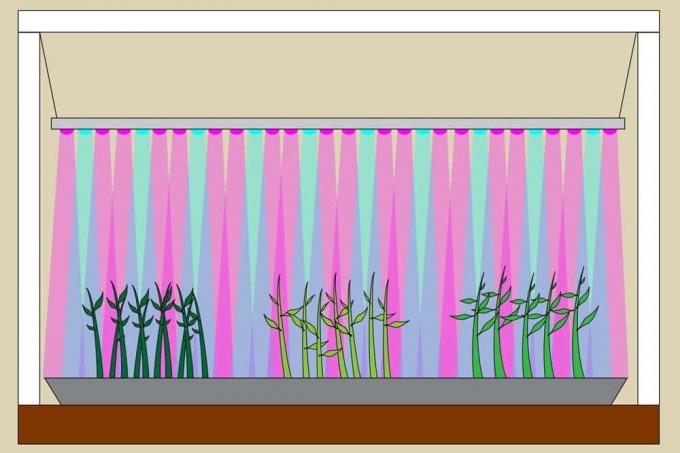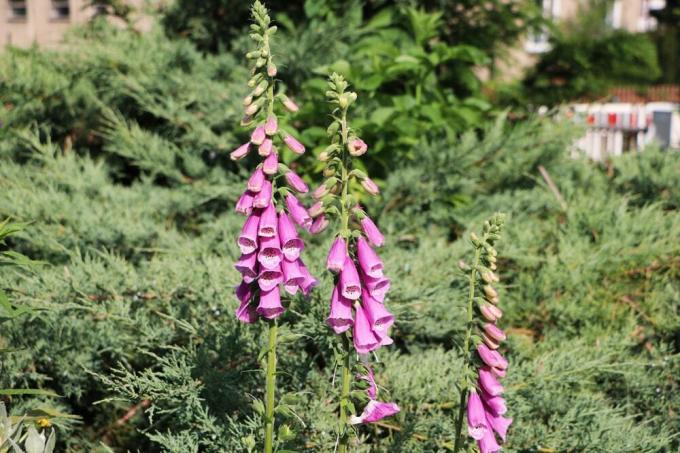

Table of contents
- The Green Flower Tea (green tea plant)
- The hardy fuchsia
- The hardy Eucalyptus Azura
- The hardy banana tree Musa Basjoo Sakalinensis
- The hardy geranium 'White Snow Double'
- A hardy tub palm
- The hardy bamboo hedge
- Frequently Asked Questions
- Things worth knowing about perennial, hardy garden plants
Anyone who chooses hardy plants for their own garden has a large selection of plants available that adorn the garden both as green and flowering plants. Even exotic species - such as the banana - are now available in hardy, perennial versions. Of course, perenniality and winter hardiness are particularly important for hedges, which should last a very long time once planted.
The Green Flower Tea (green tea plant)
A truly exotic yet exciting hardy perennial with a thousand year history in China is Green Flower Tea. The plant is evergreen and also very easy to care for. In summer she is content with a large pot and a bright and warm location, just insisting on a lot of moisture. It is also practical for the smaller garden or balcony that this plant grows very slowly.
From October to February, the plant shows pale yellow flowers that smell wonderful. Year-round green leaves can be used for high-quality green tea, a drink that has an invigorating effect and is not only considered to be of great health value in China. With a high zinc content and vitamin C content, the tea made from the leaves strengthens the body's defense system and supports it also the skin functions and is even said to slow down the aging process due to its anti-oxidative effects slow it down.
Tip:
If you want to brew the tea from your own harvest, you should keep several plants in your own garden or on the balcony, as the plant grows very slowly.
The hardy fuchsia
The pink fuchsia is known to many hobby gardeners. However, the hardy fuchsia with its blue flower color is less well known. Due to its winter hardiness, it is possible to plant this extraordinarily beautiful fuchsia in beds as well as in tubs - for example on the balcony. The bright blue flowers turn slightly purple when they fade. It is a beautiful ornament for the garden thanks to its upright growth and great flowering pleasure. The hardy fuchsia can survive the winter down to -5 °C on its own. If it gets winter protection from the hobby gardener, this plant can easily tolerate -15 °C.
The hardy Eucalyptus Azura
This eucalyptus convinces with its azure blue color and its special resistance to winter temperatures. This special variant of the eucalyptus can also withstand temperatures down to -20 °C without any problems. The strong blue-colored leaves of the plant exude a very beautiful and intense scent. The eucalyptus looks very attractive as a container plant. But the plant also looks very beautiful as a single plant in the garden bed and gives the green oasis the touch of a cottage garden. With the type of cut, the hobby gardener can decide for himself whether the plant should grow more as a bush in the compact version or more like a small tree. It is very pleasant that the interesting plant is very undemanding in terms of care.
Tip:
With its spicy scent, the eucalyptus drives flies and other insects away from its surroundings.
The hardy banana tree Musa Basjoo Sakalinensis
Anyone who appreciates exotic plants in the garden and the special visual features with the enjoyment of harvested fruit would do well with this hardy banana tree Handle. Unlike its tropical counterparts, the perennial easily tolerates winter temperatures down to -10 °C. If the plant gets a sunny spot, it will thank you with delicious fruits in summer. The hardy banana tree is just as fast-growing as it is easy to care for and really very decorative. It also reaches a height of up to 3.5 meters. The banana tree needs a little support to survive the winter with a winter cover.
The hardy geranium 'White Snow Double'
Friends of geraniums have often regretted that the luxuriant flowering plant only blooms in the warm season, but also has to be replanted every year. This is different with this hardy variant of the geranium. The relatively new species of geranium was bred in England. It also impresses with a month-long, filled permanent bloom in summer, which is very similar to the well-known balcony geranium. If you want to plant the geranium in two colors, you can combine it with the "Blaue Birch Double" variety plant, which in turn will have a lilac-blue hue both in combination with the white variety and alone works very well.
A hardy tub palm
Anyone who appreciates palm trees in their own garden has always had the problem that the palm tree had to be taken indoors for the winter or even had to be stored in the nursery if there was not enough space. The concern Trachycarpus fortunei is again a tub palm, which also accepts winter temperatures without any problems. Outside temperatures down to -15 °C are not a problem for the palm tree and it can therefore stay outside even in a harsh winter. Nevertheless, the palm tree exudes Mediterranean flair in your own garden all year round, and it also looks very good on the balcony or terrace.
The hardy bamboo hedge

With the name 'Fargesia murielae Simba', the bamboo hedge convinces as an exotic yet hardy plant. The decorative and leafy hedge is a beautiful alternative to classic hedge plants. In addition, it grows relatively quickly, offering a privacy screen for your own garden within a very short time. Since the plant stays green even in winter, it is a special decoration for the garden, which filters out street noise and also prevents uninvited glimpses into the garden in winter.
Tip:
This bamboo is also suitable as a hedge plant because it is able to filter bad air and thus improve the air quality in your own garden even on busy roads.
Frequently Asked Questions
To ensure that a planter for hardy potted plants survives the cold season, you should pay attention to this property before you buy it. It is important that the planter is not made of porous material that soaks up irrigation water, which in turn bursts the planter at freezing temperatures.
It is always important that the plant is protected from the cold on the ground. The best way to do this is to place natural materials or bubble wrap under the potted plant as insulation for the winter to keep the ground frost away. Otherwise, a loosely tied burlap sack draped around the plant can protect the plant from excessively frosty temperatures. Plastic films should never be used as insulation, because heat and moisture accumulate under them, which causes the plant to rot and mold.
Things worth knowing about perennial, hardy garden plants
Most people have perennial plants (see also annual and biennial plants) in their garden without being aware of it, because shrubs and trees are also part of it. In general, the term perennial plants for the garden refers to all those plants that can be used for several years. Some of them need protection from the winter, while others can remain in the garden during the winter.
Frost protection for perennials
- Perennial plants for the garden, which remain in the garden in winter, often need special protection from frost. For this you often have to put a layer of leaves on the ground around the plant or cover it with straw and a Burlap sack from frost damage protection.
- With potted plants that are perennial, you often have to cover the pot with straw and a jute sack provided to protect the sensitive root ball from the frost and the plant itself cut back.
Perennials that prefer to overwinter indoors
- Among the plants that need to be protected and kept indoors during the winter, there is no doubt that geranium. Here, however, it is enough to bring them to a dark place, for example the basement. Watering is not necessary during this time. The following year, dry leaves are removed and the flowers are planted in fresh soil.
- Plants that are supposed to be hardy but are often unsure should consider storing them indoors if necessary. This includes above all oleander.
- The Bougainvillea, which is becoming increasingly popular on more and more terraces, will last for many years if kept outside in the summer but indoors in the winter.
Frost germs among perennials
- Some plants can already be used as seeds and may need frost to germinate properly. This includes, for example, the wild garlic, which can be used for several years, but must be sown in autumn in order to sprout the following spring.
- Trees like the maple or the beech are also frost germs. If you want to grow a hazelnut bush, you should keep some hazelnuts in the freezer for a few weeks.
Popular perennials and shrubs
- The perennials are in many cases flowering plants that grow as bushes and Hedges trimmed regularly should be, especially in spring, to remove wild shoots.
- Roses are considered climbing or bush roses and ground cover available. The same care instructions apply to all. With the climbing roses you should note that you can use a rose tendril as a climbing aid attached, bush roses occasionally have to be stabilized and brought into shape with a rope. It is important that roses are pruned back well in autumn.
- The same applies to trees. Whether it's about lilac or an apple tree: both don't require much care, but need protection from pests and pruning in the spring.
 garden editorial
garden editorial I write about everything that interests me in my garden.
Learn more about grooming

send plants | 7 tips for sending flowers
Sending plants requires good preparation. Not only the type of packaging is of great importance, so that the goods arrive safely at their destination. The season is also important. It depends on how well the plants survive the transport.

30 office plants for a better indoor climate
A bit of green in the office not only looks pretty, but can also significantly improve the indoor climate. For example, indoor plants increase humidity, can clean the air and, if they are large enough, even dampen noise.

21 edible flowers | What flowers can you eat?
Edible flowers can be used for many dishes in the kitchen, not just as decoration. The flavors range from sugary-sweet to peppery-spicy and give food and drinks a very special touch.

Everything about LED plant lights: Build plant lights yourself
Plants need light. In the absence of it, they suffer or perish. Sometimes, conventional daylight just isn't enough to meet a plant's light needs. Then LED plant lighting can help. How to build such a plant light yourself is here.

Shade plants: 17 green and flowering plants for the shade
Shady garden areas are a challenge for every hobby gardener, although shade does not mean that it is completely dark. Partial shadow and light shadow are also a type of shadow. The range of suitable plants is growing steadily and offers a variety of design options.

Forest flowers: 55 flowering species in the forest sorted by color
When the local forests dress in picturesque shades of color throughout the year, the numerous forest flowers in Germany present themselves and inspire with their blaze of colour. From purple to red to white and yellow, the German forests have a lot to offer.

